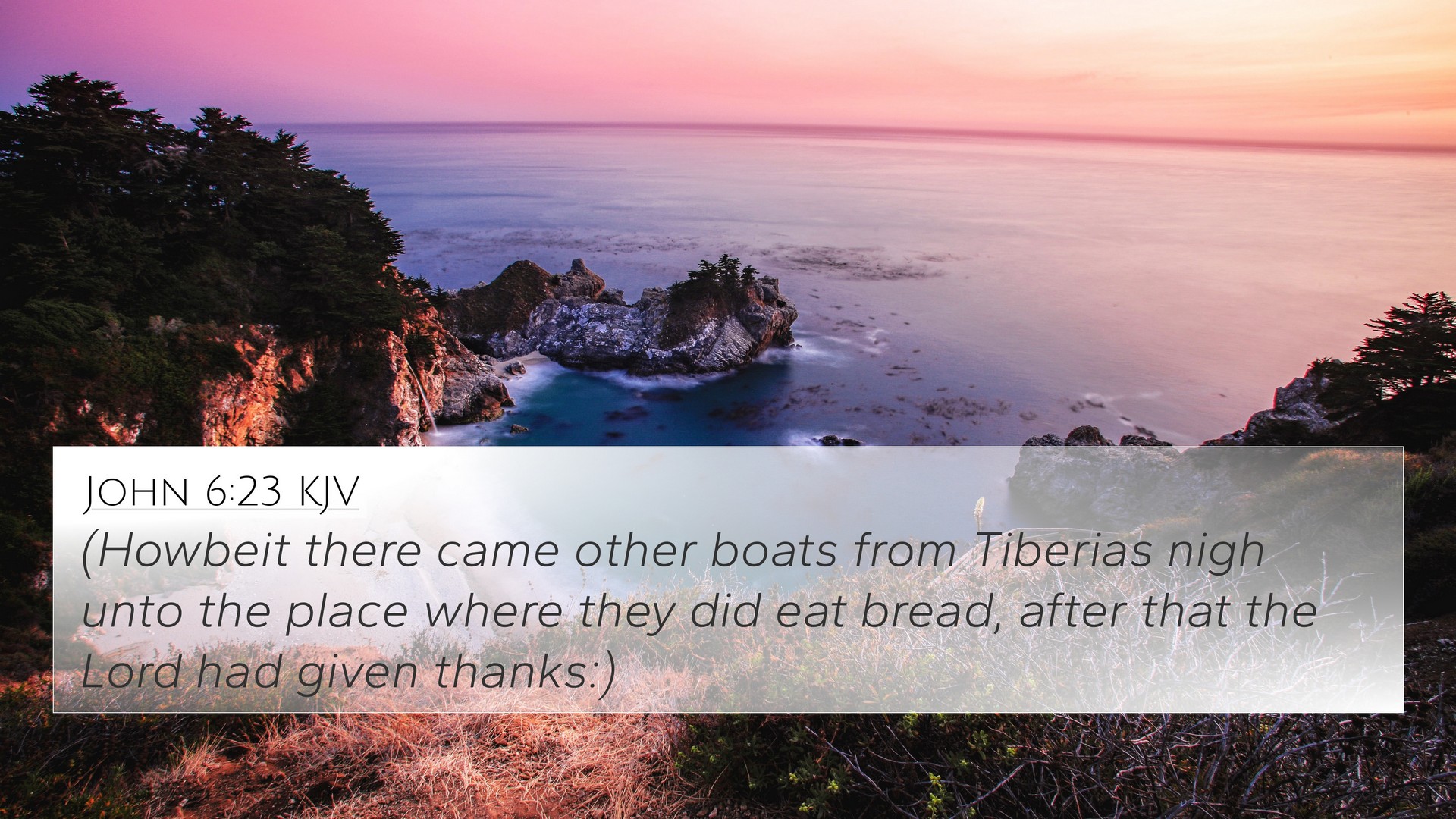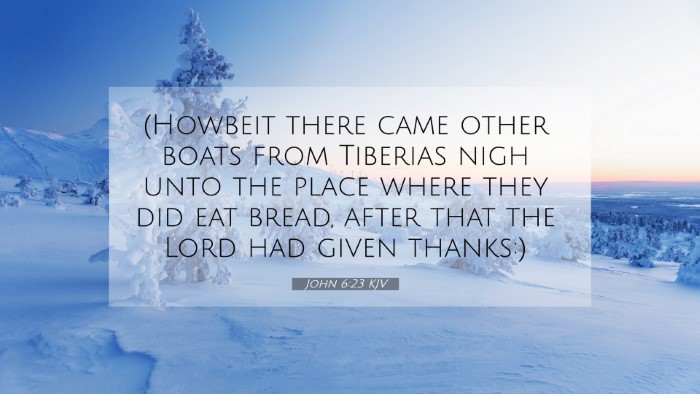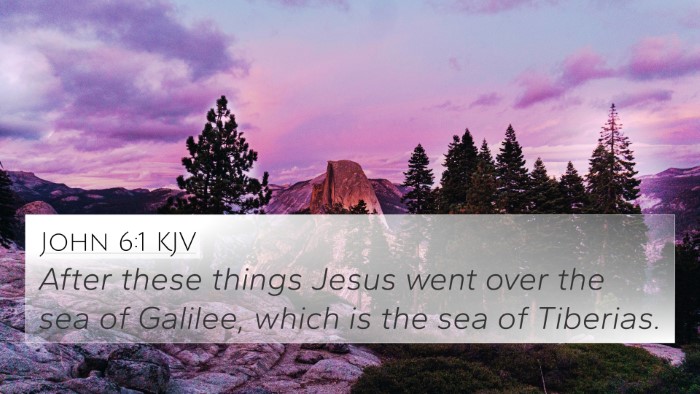Understanding John 6:23
John 6:23 states: "Howbeit there came other boats from Tiberias nigh unto the place where they did eat bread, after that the Lord had given thanks." This verse takes place immediately after the miraculous feeding of the 5,000, highlighting not only the miracle itself but also the continued journey of those who sought out Jesus and His teachings.
Meaning and Interpretation
This verse serves as a transition in the narrative, emphasizing the draw of Jesus as a teacher and provider. The arrival of other boats signifies the persistent search of the people for both physical sustenance and spiritual enlightenment.
Insights from Commentaries
-
Matthew Henry: Henry notes the significance of Jesus providing bread and how it points to a deeper hunger that goes beyond physical needs. The boats symbolize the ongoing pursuit of Christ in the midst of miraculous occurrences.
-
Albert Barnes: Barnes emphasizes that the details of this verse serve to illustrate the connection between miracles and the subsequent actions of those who witnessed them. The mention of Tiberias adds geographical context to the miracle and indicates the people's determination to follow Jesus.
-
Adam Clarke: Clarke points out that the act of giving thanks prior to breaking the bread signifies the importance of gratitude in the believer’s life. It also foreshadows the greater spiritual nourishment that Jesus will provide in His teachings about being the Bread of Life.
Bible Verse Cross-References
John 6:23 is closely connected to several other biblical texts that deepen its meaning and context. Below are 7-10 cross-references that illuminate the themes presented in this verse:
- Matthew 14:19 - The feeding of the 5,000 illustrates Jesus’ power to multiply food, foreshadowing His spiritual sustenance.
- Mark 6:41 - This passage recounts how Jesus took the loaves and fish, gave thanks, and distributed them, paralleling John 6:23's emphasis on gratitude.
- John 6:1-14 - The entire narrative of the feeding of the 5,000 wraps around John 6:23 and showcases Jesus’ miraculous provision.
- Psalm 107:9 - “For he satisfies the thirsty and fills the hungry with good things,” reflects the deeper spiritual truth that the bread symbolizes.
- Isaiah 55:1-2 - A prophetic invitation to come and find nourishment without price resonates with Jesus’ offering of Himself as the Bread of Life.
- John 6:35 - Jesus explicitly states that He is the Bread of Life, reinforcing the connection of physical bread to spiritual sustenance in the following verses.
- Luke 9:10-17 - This account mirrors John 6:23 in the miraculous feeding and the disciples' involvement in distributing the food.
Connection Between Bible Verses
Understanding John 6:23 involves recognizing its thematic connections to other scriptures.
-
Thematic Connection: The theme of sustenance and provision runs throughout the Bible, from the Manna in the wilderness (Exodus 16) to Christ’s teachings on the Bread of Life in John 6.
-
Comparative Bible Verse Analysis: By analyzing related verses, one can see how the narrative of physical bread leads to profound lessons on spiritual fulfillment.
-
Inter-Biblical Dialogue: John’s Gospel continually draws on Old Testament themes, and John 6:23 is a prime example where the Old Testament concept of God providing bread intertwines with Christ's mission.
Tools for Bible Cross-Referencing
If you're interested in exploring these connections further, consider using bible reference resources such as
- Printed Bible Concordances
- Digital Bible Study Tools and Software
- Cross-Reference Bible Guides
Conclusion
John 6:23 thus encapsulates a moment that is rich with meaning—not just in terms of the physical act of feeding but pointing to the deeper reality of Jesus as the source of life and sustenance for believers. Through scriptural cross-referencing, one can deepen their understanding of both this verse and the larger narrative it is a part of.




